Q’s on tiling with dot-mounted 1″ hex mosaic
I am tiling a 3′ x 7′ water closet in 1″ hex tiles. The sheet mounting leaves much to be desired, with the widest gap about 3x the most narrow. I’m sure it will show, but not sure if it really matters or if it will be too subtle to make a difference. The other question is what to do about it. I don’t know that cutting the odd ones free is really practical. I’m cutting some free for the black rosettes set in the white field – cutting those dots is a pain. A wet razor seems about the best way.
Also, how does one trim at the walls and around plumbing holes? Nippers or carbide hole saw? Do you really bother with mounting half tiles at the wall, or just make the baseboard & quarter-round wide enough to cover the “missing” half tiles around the borders?
Thanks
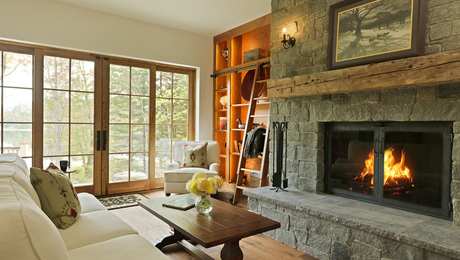
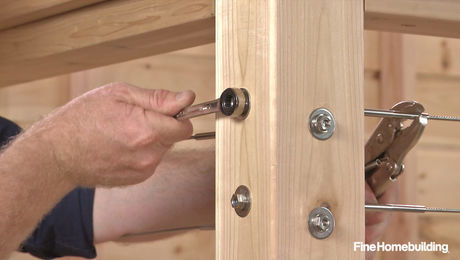

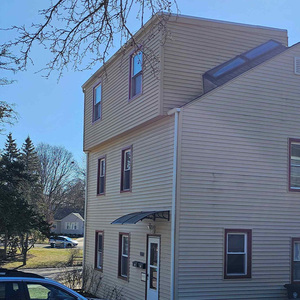
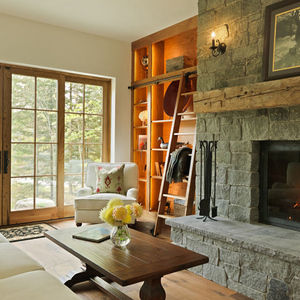
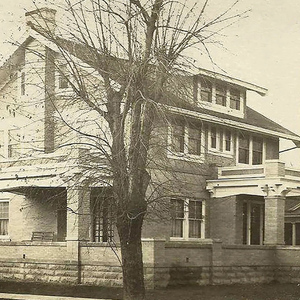







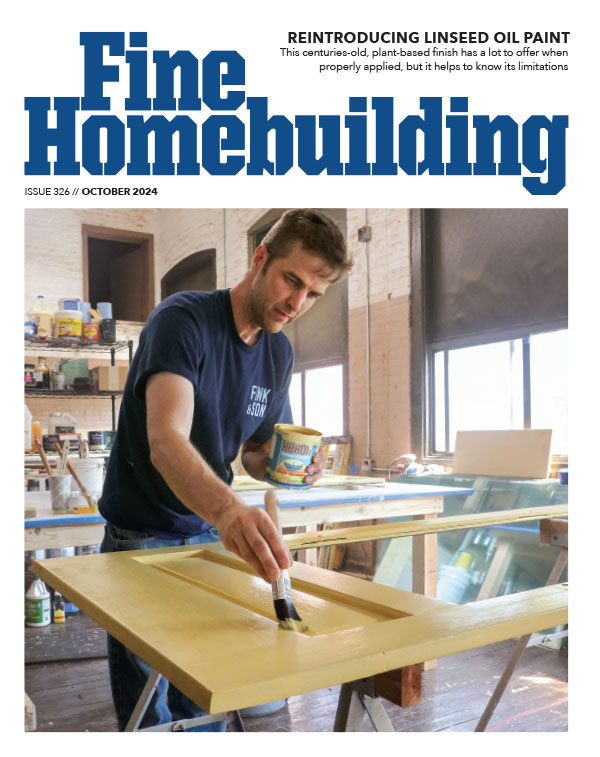





Replies
Well..........
Sheet tiles often are done poorly in their makeup. While grout will "cover" a multitude of questionable things, it might not in your situation. Hard to tell from this distance, but if it bothers you now-you know it will bother you more later. Cut the backer and move em around.
Most plumbing penetrations will have an escutcheon that surround it. Get a little closer than that.
Around the perimeter, do the same. Get close enough that things cover. If in doubt, cut another tile......................well, another 50-100. Cuts in half produce two tiles. Trim is meant to accentuate WHILE it covers things up. Don't ask it to do more.
What's a wet razor?
A "wet razor" is the evil
A "wet razor" is the evil twin of a dry razor.
With some tile, especially on with an irregular pattern painted on instead of solid color, the discrepency in the field won't be seen. Some of the tile I used in my bathroom was odd in that the edges were straight, but the gaps within the sheet were all over the place.
If you are doing white tile with dark grout, get a better tile source.
A wet razor is a razor that I've dipped in water. The water gives enough lubrication to keep the blade from sticking in the plastic stuff they use to join the tiles together. Otherwise that stuff is a devil to cut.
I've attached a photo of the tile sheet as an example. The center and the lower right show the largest difference in gap. I'm sure they use a jig to hold the tiles while the dots are set, so it must be shrinkage or pulling them before the glue sets.
I'll be cutting out some tiles to replace with black to form rosettes. Cutting out the badly spaced tiles will probably not be that much more work. I've not yet found the 120-degree spacers I need to keep them positioned while I beat them into the mortar, but trust that someone still carries them.
oh boy
You brought back memories..........
A woman wanted those in the backsplash.
Stood at that saw and cut a half million of em in half to make the one million we needed to run the bottom at the counter, up the sides and you bet-up under the cab bottoms too.
Yuck.
But, better than I have seen where grout was their method of finish.
A while ago the back was a thin rubbery plastic mesh, that cut easily. That gooped up stuff I met a yr or two ago and you are right. Tuff.
There used to be a papery backer-released when wet.
That was no fun either.
They make adhesive sheets designed to put on the face, to hold the tile in place while you set them. I would think your better tile shops would carry them.
I'll bet those are from Daltile
We just completed a major main bath reno and used 1" hex from Daltiles. We have also 1" square from Daltile in two other baths. On all three jobs, there were a few tiles that were mis-aligned on a sheet. All three floors also have increasingly complcated patterns. I've attached a shot of the most recent pattern.
When we found mis-aligned tiles, I just cut the plastic out with a utility knife. I've also also used a 1/2" chisel. Pop the sheet onto a scrap piece of plywood and go to town. Be very careful because the plastic is hard and it is easy to cut yourself when the blade cut through.
Because of the patterns, we became pretty good at cutting the tiles loose.
We did find the sheets of hex tiles were much easier to align.
At the end of the day, cut out the major offenders and let the grout take care of the rest.
If your tiles are the from the Daltile Keystone line, I strongly recommend that you seal the tiles before you grout. It will make cleaning the tiles infinitely easier.
Good luck, send pictures!
David
Old thinset
A silly question, but someone may search for it in the future. For how long is thinset mortar usable? I have had a bag of polymer modified thinset (VersaBond) for a few years, waiting for this project to "mature". It has some clumps, but they smooth out in mixing. I used it to bed the backer board since this acts less as a bonding agent than as a gap filler. I used some of the leftovers to bond a pair of 4" ceramic tiles back to back to test the mortar's ability to bond. Once set, it required a moderate prying force of a thick paint scraper to pop them apart. Having not tried this with new mortar, I have no idea how it compares. I think I'll buy a fresh bag of mortar just to eliminate a point of doubt.
The question is appropriate.
The volume of tile work I do is minimal compared to someone in the trade, so it's not unheard of to have a bag of material sit for quite a while. If there's any question as to it's ability to perform, I do not use it. If there is a "shelf life" on thinset or grout I do not know it. The way an opened bag is stored can certainly alter how long it's good.
One thing I do is wrap mortar products tightly in plastic and seal them up with duct tape. Gives you a bit more confidence that they're good after a few years.
Mortar storage
Another good storage option is a covered pail. Bakeries, or grocery stores with bakeries, frequently just toss the pails used to hold frosting. Whenever I ask, they give me a few for free. They are between 2 and 5 gallons and have lids with rubber gaskets. Way more convenient than the dust storm that comes with closing up the bag. I've done this with portland, but did not with the thinset.
Mosaic tile sheet dry run
I placed all the sheets of tile, to see if I can get them all to line up with acceptably consistent grout joints. I figure I should try it dry first since it will be no easier with mortar. It was like playing Whack-a-Mole. Getting the spacing right in one place required moving it off kilter in another place. I had to walk away from it a few times because of frustration. In returning the sheet back to their box, I was surprised how well the edges of the sheets lined up, making me think it should be possible for them to fit better than they did. Is this par for the course with dot-mounted mosaic tiles?
I actually considered cutting all the tiles loose and setting them individually, but I have no illusions that such an installation would be easier, since, even with spacers, I'm sure the little buggers would still move around in the wet mortar. I would need a straight edge at 30 degrees to act as a guide for the first group set. Once that mortar cured, that set would act as a guide for the rest. I have given this way too much thought. Given that there are about 2400 tiles, please talk me out of this.
DO NOT DO THAT!
Believe me, if you sit in front of that splash after grouting and can see any "off", you are too anal.
If you're so proud of your work that you don't put anything on that counter at all, shine Under Cab Lights full bore so all your friends that join you sitting in front ot the splash.............they you all should be led off to seek help.
Place the sheets on the wall, take a close look (not very long of a close look............and then move a couple if the grout joint is somewhere around dbl what it should be...................or a tad less.
Continue on.
Then enjoy cutting all those damn little pcs that you'll need along the counter top and up the sides of whatever.
My advice is taking strips of something. Whatever you can find-be it a couple stacks of cereal box paperboard, a rip of something that'll stay flat, something-that's just under the space you have in between the tiles now...............and lay that along the countertop at the wall. Build up off of that-your sheets will rest on the "shim". This gives you a caulk joint which I do first with color matched (to the grout) caulk-not silicone. Once all tiles are set and secure, before you grout-caulk NEATLY (use tape if you need to) that gap you have between counter and tile. You want to seal the tile cuts to the counter. This is not a finish caulk job. It can be slightly back in from the face of the tile. Don't use a bunch, it'll work it's way up into all those damn angled joints and MIGHT show when done.
Let it set up and then proceed with grouting. Be carefull grouting around outlets, those little damn pcs. you shoved in there to get behind the cover plates will not be stuck too damn good. KNOW WHERE the cover plate will cover so you have both tile in there AND can grout beyond enough for the plate to eventually cover.
After all the grout has been placed, make sure you don't have a bunch coved out on the countertop. I strike that grout flush with the tile and then finish the whole thing with a taped off and neat final caulk (to match the grout) detail along the counter. You tape off the tile and the counter the distance apart you want your caulk to end up. Caulk, tool in real close to that tape edge, then pull off the upper tape-pulling up and away. Then do the bottom tape, up and away. Should only need a VERY LIGHT damp finger to flatten the line the tape might leave.
or not.
Best of luck.
This is a bathroom floor tile installation
So I will not be getting close enough to celebrate its perfection with friends. Having removed the handful of horribly misaligned tiles, the alignment of the tiles within each sheet is acceptable. I just want to avoid having a visible zig-zag of a too wide or too narrow gout line between misaglinged sheets of tile.
While white grout would make unequal grout lines between white tiles much harder to see, I think that for a floor installation, grey will look better in the long run, since the traffic area will turn grey anyway. Since the floor will have black rosettes within a white field, I think that grey grout will be a good compromise in contrast for both.
Hey, my apologies............
Next time I'll re-read the original post.
I just can't get that damn tiny mosaic back splash out of my mind......................
I think it needs to be kept in mind that this is a 3x7 space. It may seem that small is good, but by the time you're done you'll be battered and bruised by bumping into the walls, and sore from contorting your body to reach the corners.
Post-mortar analysis
I'm not done yet, but so far, it is not going as well as I would like. I'm willing to spend a rediculous amount of time to get a good result, but I get pretty grumpy when my best effort gives mediocre results. The problem is that the sheets of tile end up having an impossible alignment problem. I set each sheet as a best fit with its neighbors, so I don't see that error should accumulate. For others that might read this thread, I'll list some of the things I think I should have done. These are in addition to, or in consideration of what is in the book "Setting Tile".
Make sure the floor is flat. Screed a layer of thinset on the subfloor using a straightedge. It need be only as thick as required to fill in the low spots. Once set, then comb some thinset to bed the backerboard. This may require drilling pilot holes through the set layer of mortar for the screws, but so be it. Check for flatness while you screw it down.
On long narrow rooms, tile out from the long wall, setting the long edge of the sheet along that wall. I didn't want to tile myself into a corner, so I started at the back of the 3' x 7' water closet out to the door. I needn't have worried because the progess was slow enough to have never needed to walk on wet mortar.
Draw layout lines on the floor, but also on the walls so you can use a straightedge to guide the position of the mosaic tile sheets. I gobbed mortar of the floor layout lines, making them useless.
That all said, I check for flatness, which is a little hard in a long narrow room, and thought the 3/16" variation acceptable. I checked the alignment of the tiles along the long wall and found them remarkably well aligned. I'm not sure why the alignment is getting worse as I progress, but it is. I may need to cut a couple of rows of tiles free from the sheet around the edge so I can set them by hand to get a best fit.
It might help.........
to grid out the floor, making lines about what you can reach and position. Do the whole layout-it should look like a checker board. When you apply the thinset-start just short of the line-don't erase them with your trowell.
The grid should include the tile sheet and 1 grout joint (but with those hex mosaics...................no way.
best of luck.
Grout float
Having finished setting the tile, I now need to grout. Which float is appropriate for 1" hex floor tiles? One type is a red resilient sponge, the other similar, but with a 1/8" dense rubber facing over the spongy part. Marshalltown makes both.
Probably too late but but the float with the hard rubber facing
You'll need that so that you can pull as much grout as possible from the face of those beggers.
Cheers,
David
Grout float
The message was too late, but only in the sense that I had exchanged floats earlier anyway. According to Marshalltown, the red float is for plaster work, so I swapped it for the dense rubber type that is typically used for grout. In any case, the job is done. It's amazing what a decent grout job can do for a mediocre setting job. There's plenty of flaws with respect to grout joint width, but it's hard to see unless I study it. It may have something to do with the "business" of the hex pattern that makes it seem very regular when it is only sort of regular. A real setter would probably roll his eyes at my work, but I think it's adequate.